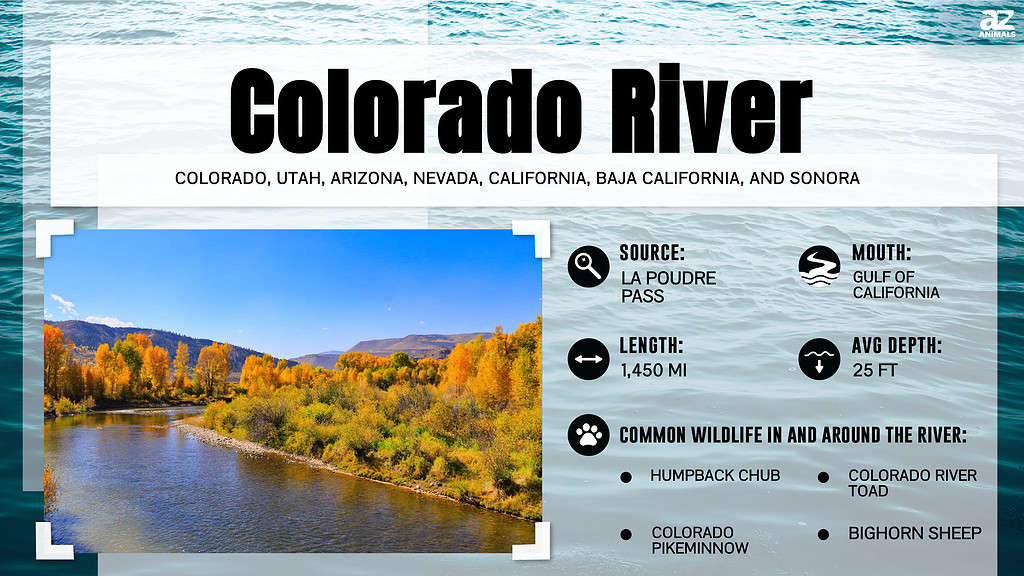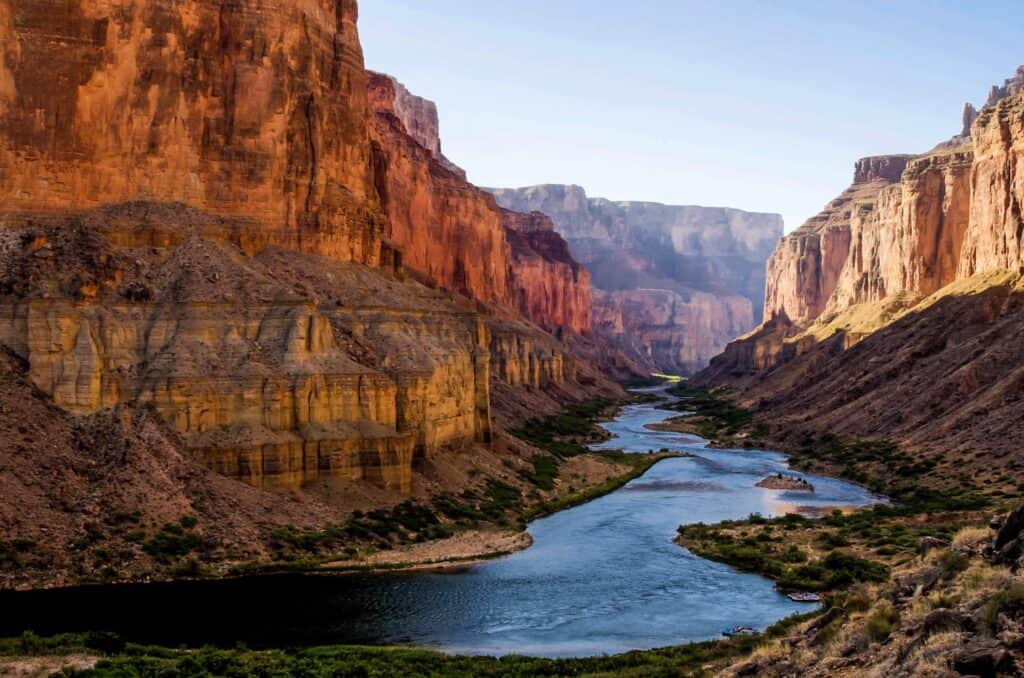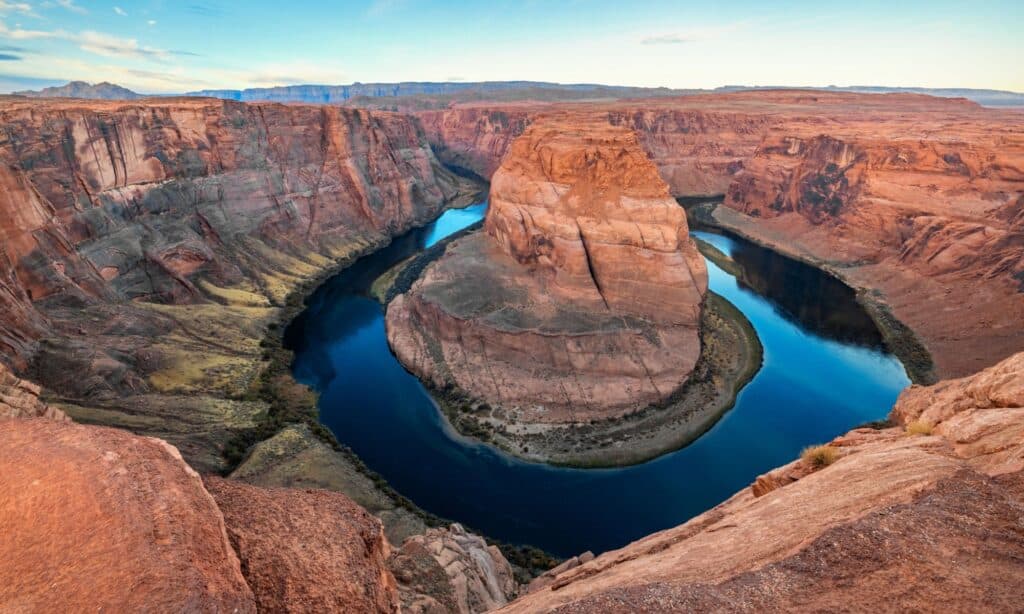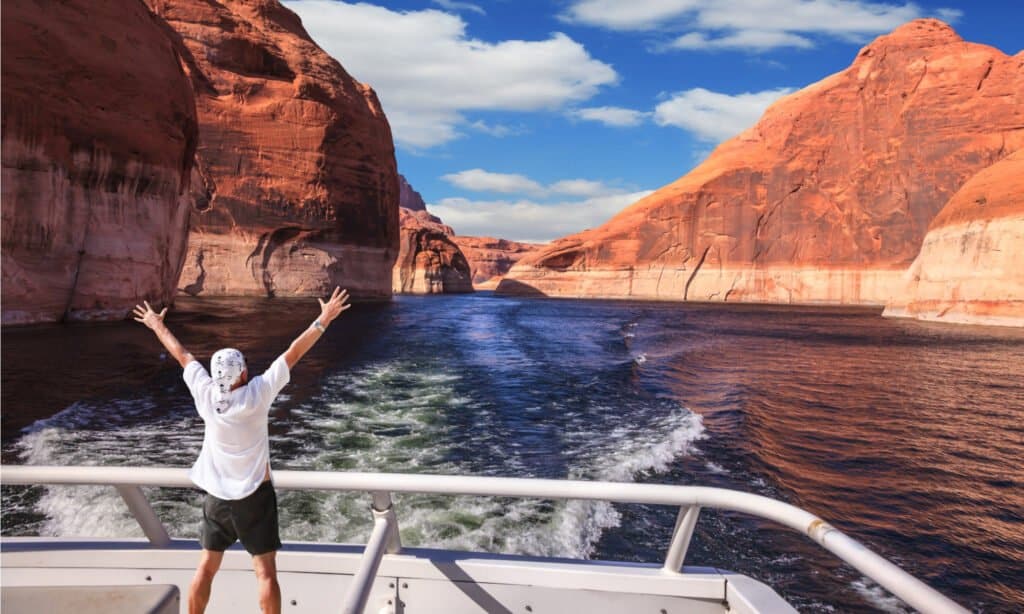The Colorado River is a beautiful body of water located in the Northern region of Mexico and the southwestern region of the United States. In Arizona, this stunning river is identified for the awestruck grand canyons it flows through and is also famous for its whitewater rapids. The Colorado River is a tributary to many rivers, but it is a significant tributary to Gunnison, San Juan, Gila, and Green rivers.

The Colorado River and its tributaries serve as a water source for over 40 million people, and most of its water flow is directed toward urban water supply and agricultural irrigation. Unfortunately, the river’s water demand doesn’t equate to the supply anymore. As drought hits, the Colorado River region is getting dryer; the government has begun issuing a severe warning to save the river. Because of this shocking discovery, this article will discuss the length of the river, the threats to the river, why the river is so important, and what we can do to save our dear Colorado River.
What is the Length Of the Colorado River?

The Colorado River is 1,450 miles long.
©Beth Ruggiero-York/Shutterstock.com
The Colorado River is considered the 6th largest river in Northern America. It is the 5th longest in the whole of the USA and the 47th longest river in the world. The Colorado River starts from La Poudre Pass in the southern Rocky parts of Colorado and ends at the gulf of California. The measurement from each end is about 1,450 miles (2,330 km) in length, having its widest point at Grand junction, Colo. This river runs through seven the U.S states Utah, Wyoming, New Mexico, Arizona, Nevada, Colorado, and California.
Why is the Colorado River So Important?

The Colorado River is the principal water source for over 40 million people.
©Lebid Volodymyr/Shutterstock.com
Aside from the beautiful scenery the Colorado River offers, it also has other vital uses. The Hoover Dam in the Colorado River controls the supply of potable water and primarily generates electricity. Over the years, it has also become the principal water source for over 40 million people. These people use the water from the river for either crop irrigation, electricity, or urban water supply. Also, because there is only a limited amount of rain in most of the cities the water crosses through, the clean running water of the Colorado River serves as the primary source of usable water.
Why Did The Federal Government Issue A Warning?
The states surrounding the Colorado River get only a limited amount of water from other sources besides the Colorado River. Unfortunately, drought has struck the Colorado River, and we must adjust water usage. The Bureau of Reclamation stated that urgent action has to be taken as the water level in the two largest reservoirs continues to drop. Meanwhile, researchers have predicted over the years that Lake Powell and Lake Mead would dry if changes to the water allocations are not made. Currently, Lake Mead holds just a little above 25% capacity, while Lake Powell has already gone below that. Given this, a blueprint has been released against the 2023 “urgent action” water supply cuts. These significant cuts would help protect two of our principal dams from structural destruction. Researchers have added that the dam’s ability to generate electricity will be affected if these cuts aren’t made.
What Percentage Of Allocation Does Each of the Affected States Lose?
A blueprint was released stating the cuts to be made. According to the blueprint, Arizona would lose 592,000 acre-feet of its river allocation by 2023. That’s about an 80,000-acre increase from 2022, about 21% of its usual delivery. Nevada would lose about 25,000 acre-feet, which is 8% of its allocation. Mexico is said to lose 104,000 acre-feet, about 7% of its distribution. California, by the way, would not be losing any of its shares.
Would The Warning Limit The Water Usage?
Yes, it would; because every user of the Colorado River adds to the acres we lose yearly. The numbers wouldn’t work out if the whole state wasn’t involved. Cutting water usage must be agreed upon by all sections of the state. As a residential water user, you might be off the hook a little as most states have a mix of sources. You might not necessarily need to worry about water usage in your home, but it is best to be conscious of possible changes in the coming days.
What Is The Government Doing To Make The Colorado River Situation Better?
The drought affecting the states isn’t short-term; it is what the Assistant Interior Secretary, Tommy Beaudreau, called a “prolonged drought.” However, officials would keep looking into Lake Mead’s operation to stop the lake from falling below critical levels. The government has also allocated a considerable amount of money to different organizations to help reduce the amount of water the dams are realizing. Many cuts have been made, and the water is still dropping. Even though Arizona is protesting not to join the recent cut, we believe the right choices would be made.
How Can We Save The Colorado River?

If drastic changes are not made, the Colorado River and its users will suffer unpredictable fates.
©kavram/Shutterstock.com
The reservoirs are declining rapidly, and all users have a role in ensuring that water is used appropriately. If drastic changes are not made, the Colorado River and its users will suffer unpredictable fates. We can also, as a state, agree to be rational and let go of some of the allocations to save Lake Mead and Lake Powell. The Colorado Indian tribe collectively contributed more than 200,000 acre-feet of their share, and it was said that Lake Mead’s water level rose by 3 feet after this gesture. So make sure to learn more about water usage, figure out ways to safely reduce water usage, and be a part of the movement to create positive additions to our precious Colorado River.
The photo featured at the top of this post is © Lebid Volodymyr/Shutterstock.com
Thank you for reading! Have some feedback for us? Contact the AZ Animals editorial team.






